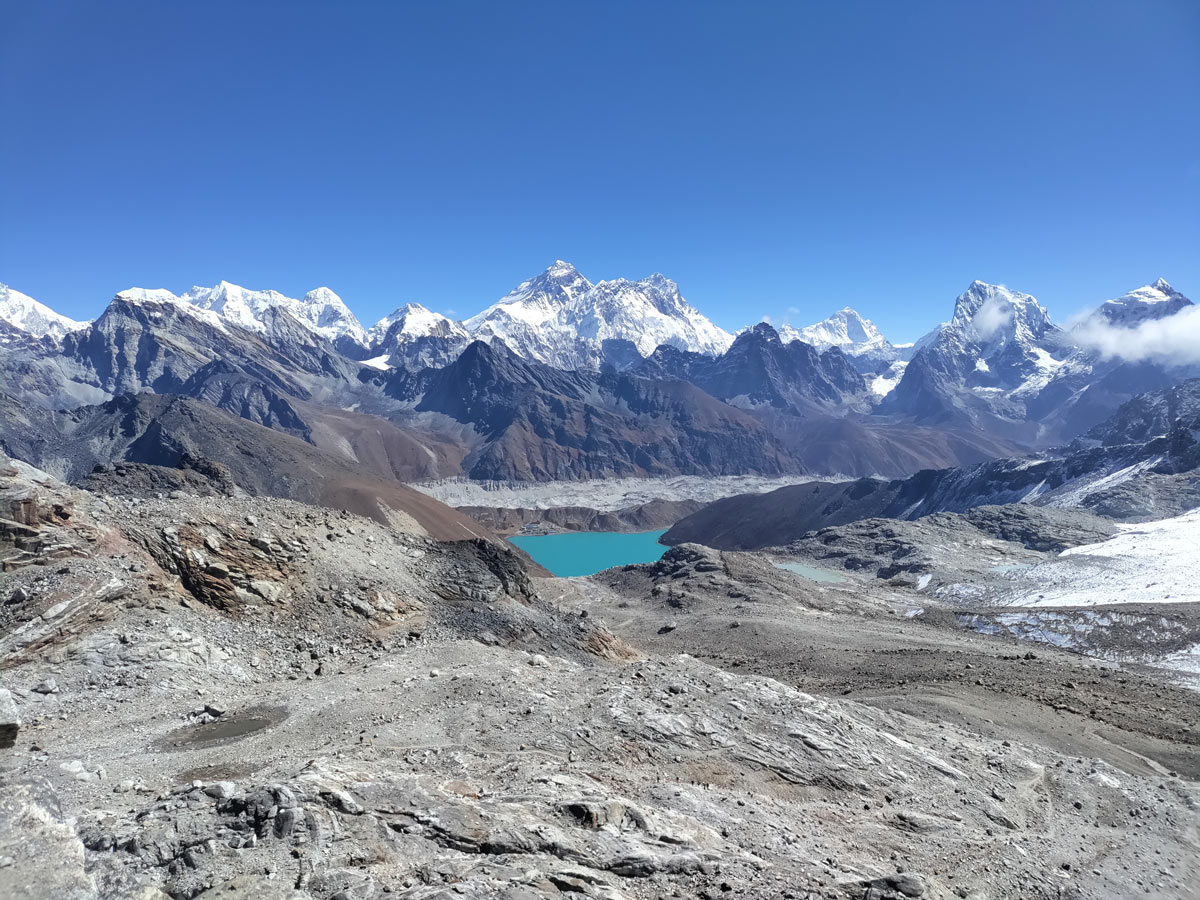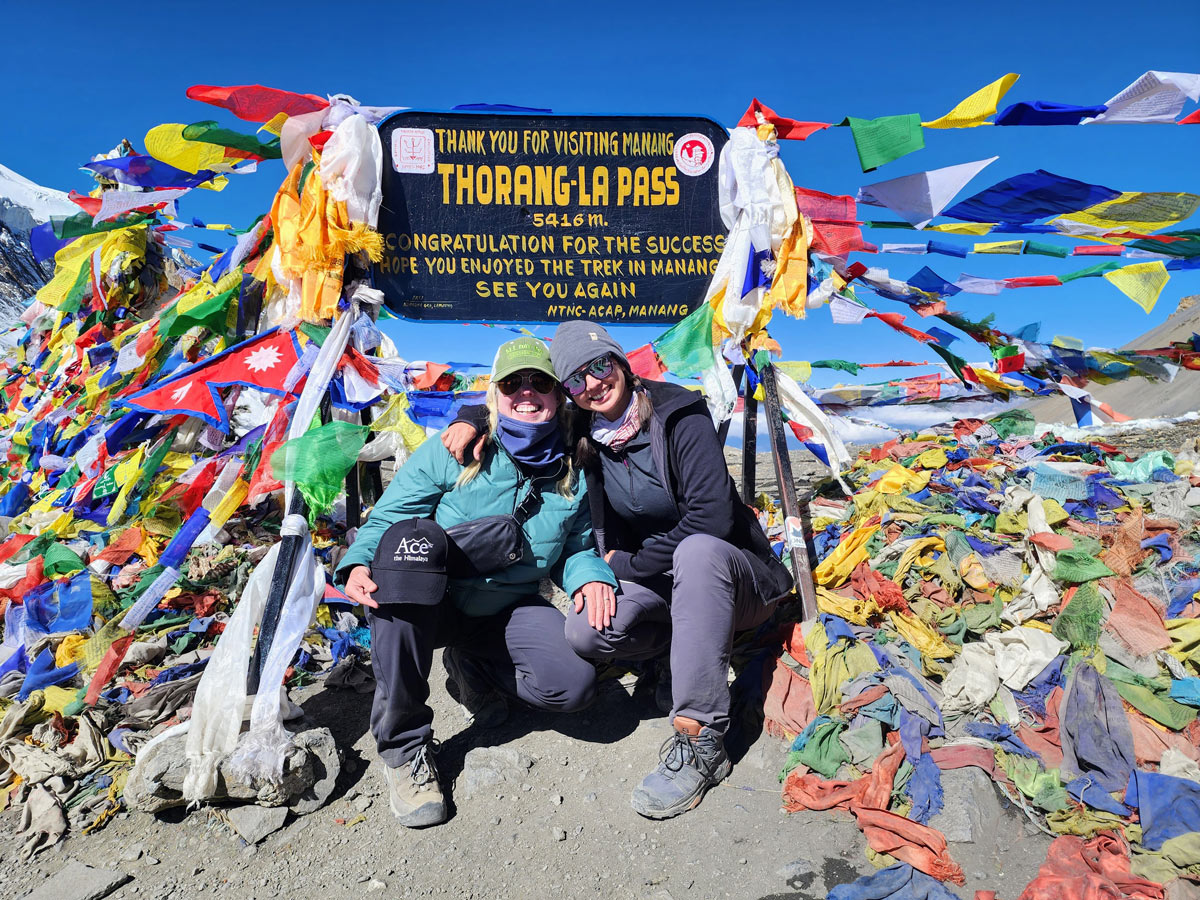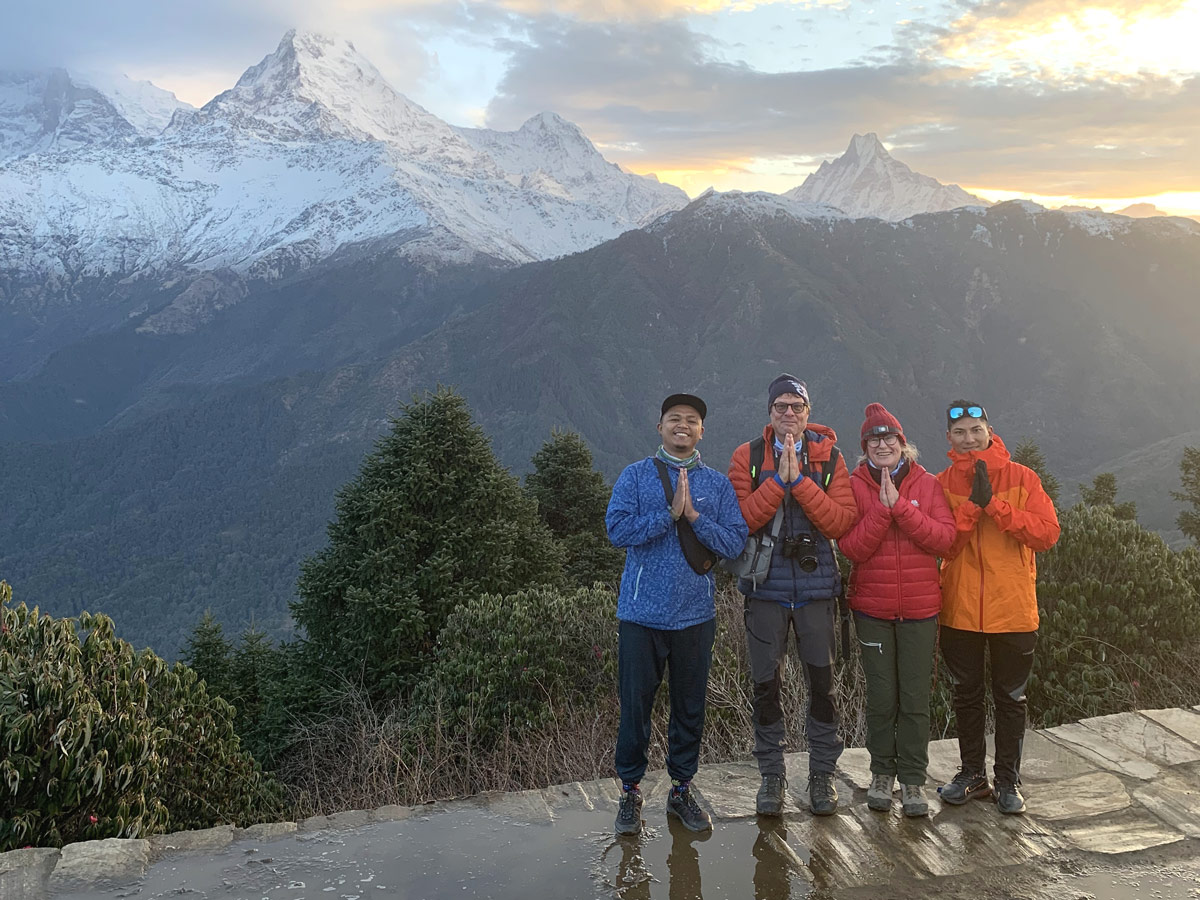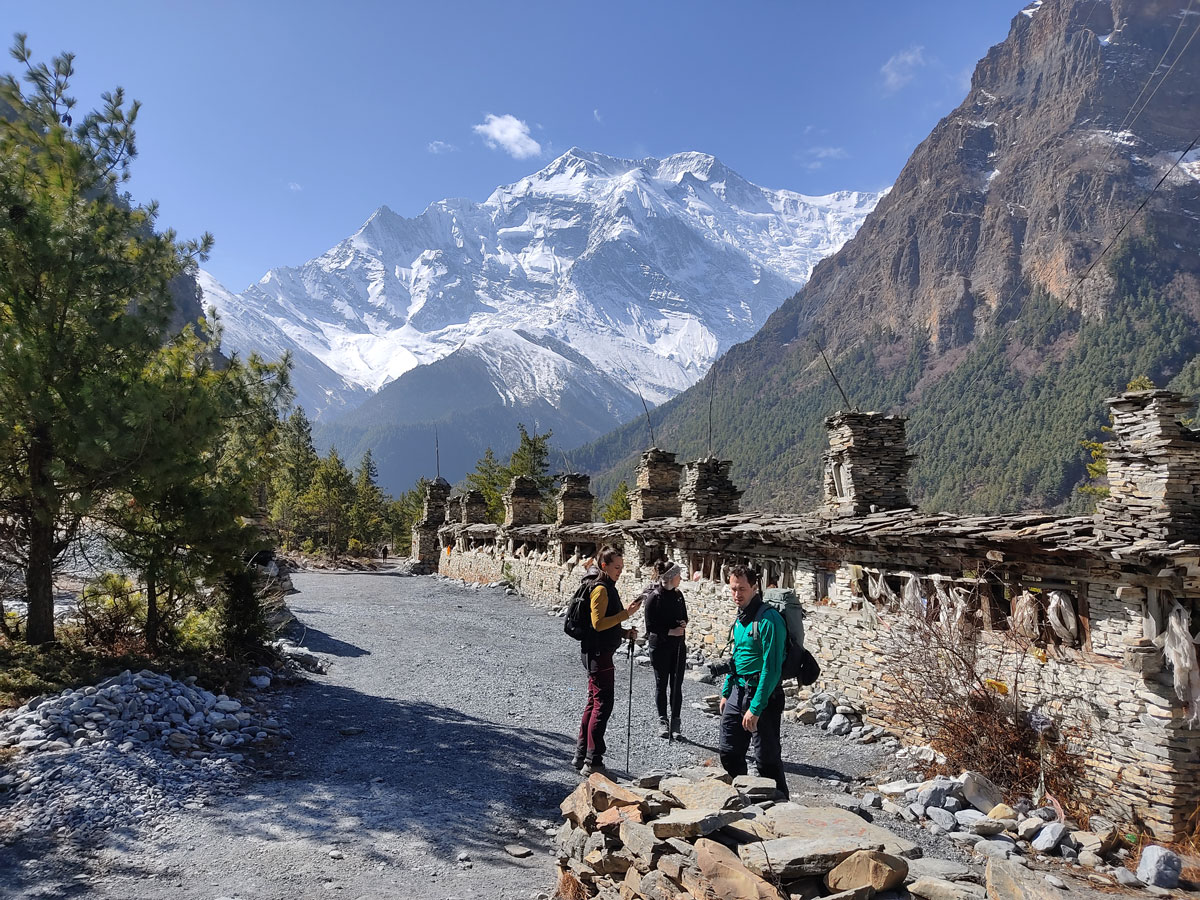Nestled in the Himalayas of Nepal, the Everest region is adorned with a crown of jewels and it beckons visitors from all over the world. However, the region features much more beyond the legendary summits.
From trekking adventures to mountaineering expeditions, the Everest region is known as a go-to region for all adventure enthusiasts.
Amidst these adventures, there lie the hidden gems- the mountain passes of Everest region.
The Essence of Trekking Through the Mountain Passes
For experienced trekkers and beginners alike, the experience of trekking through the high passes perched on the towering Himalayas is not just limited to a physical challenge.
It is an elaborate journey across several landscapes and cultures, and through several hurdles which is accompanied by a sense of accomplishment as you make it to the pass amidst the center of the Himalayas.
Besides that, it is also a reflection and a reminder of the true power of nature that induces appreciation for the mental resilience of yourself and the people who have conquered these passes before you.
Everest Region’s Mountain Passes
The Everest region is home to several passes catering to the experiences of all kinds of trekkers from beginners to the determined ones to the ultimate challenge takers. Each of these passes has its own character, challenges, and rewards.
Pheriche Pass (4,270 m)
Located at an altitude of 4,270 m (14,009 ft), the Pheriche Pass is often regarded as the gateway to remote villages and also serves as a crucial link between the remote Himalayan villages.
Given the moderately challenging altitude, the region is also a popular acclimatization stop amidst the trekkers. Getting to the Pheriche pass includes a rather gentle ascent as opposed to the challenging technical passes higher up in the Everest region.
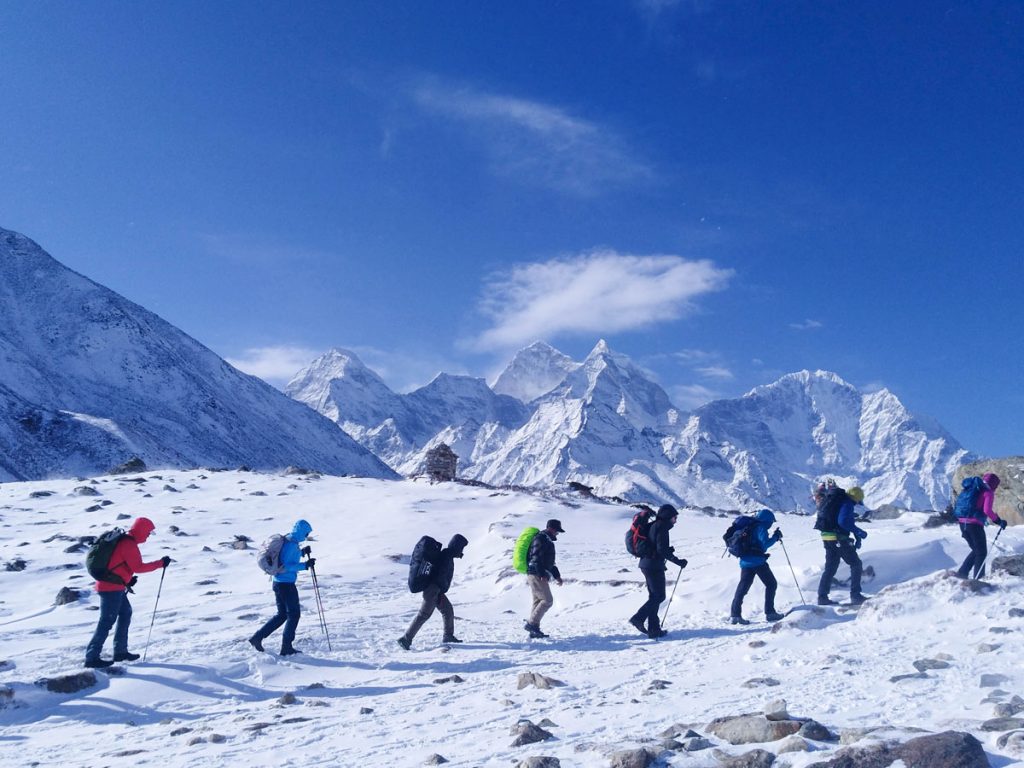
As you reach the Pheriche pass, you will encounter stunning views of the Ama Dablam accompanied by the distinct ridges of the beautiful Kantega and the majestic surrounding glaciers.
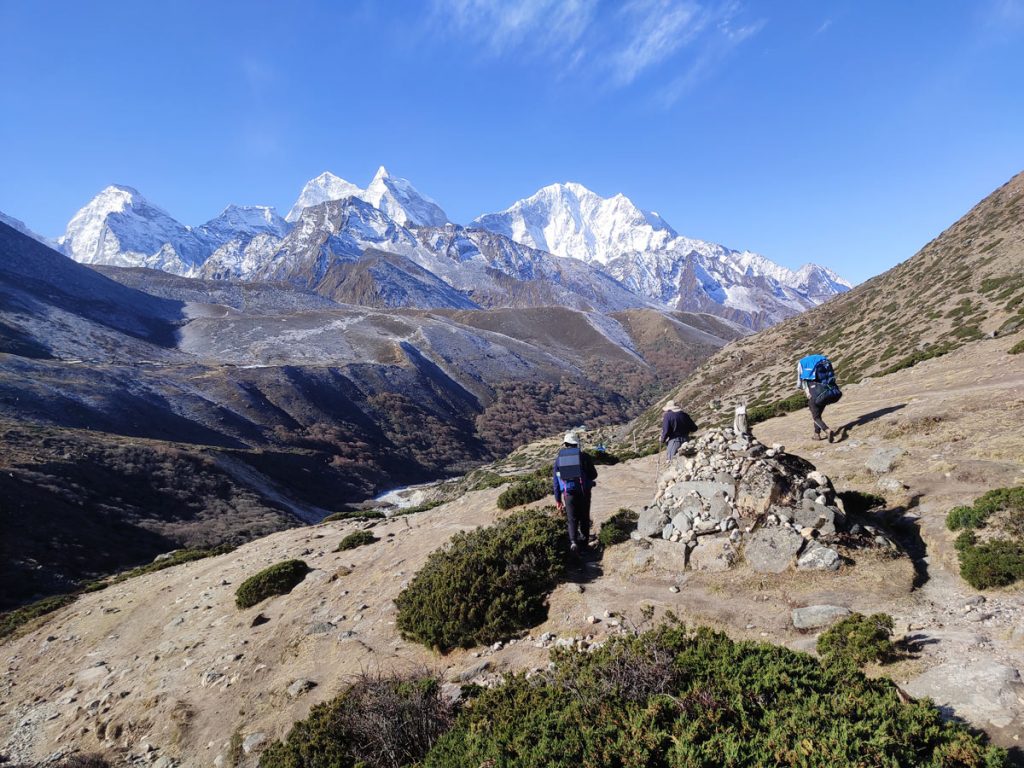
Against the perfect backdrop of natural beauty, visitors will also get a glimpse into the traditional Sherpa lifestyle at this steppingstone within the Gokyo Valley while being treated to their warm and welcoming hospitality at the teahouses.
Lobuche Pass (5,110 m)
The Lobuche Pass boasts a unique location of being nestled between the Everest Base Camp and the vibrant Lobuche village at an altitude of 5,110 m (16,765 ft). It is a key segment of the Everest Base Camp trek and one of the checkpoints too.
A perfect vantage point, the Lobuche Pass unfolds stunning views of some of the peaks of the Everest region while also presenting the Khumbu Valley in all its might.
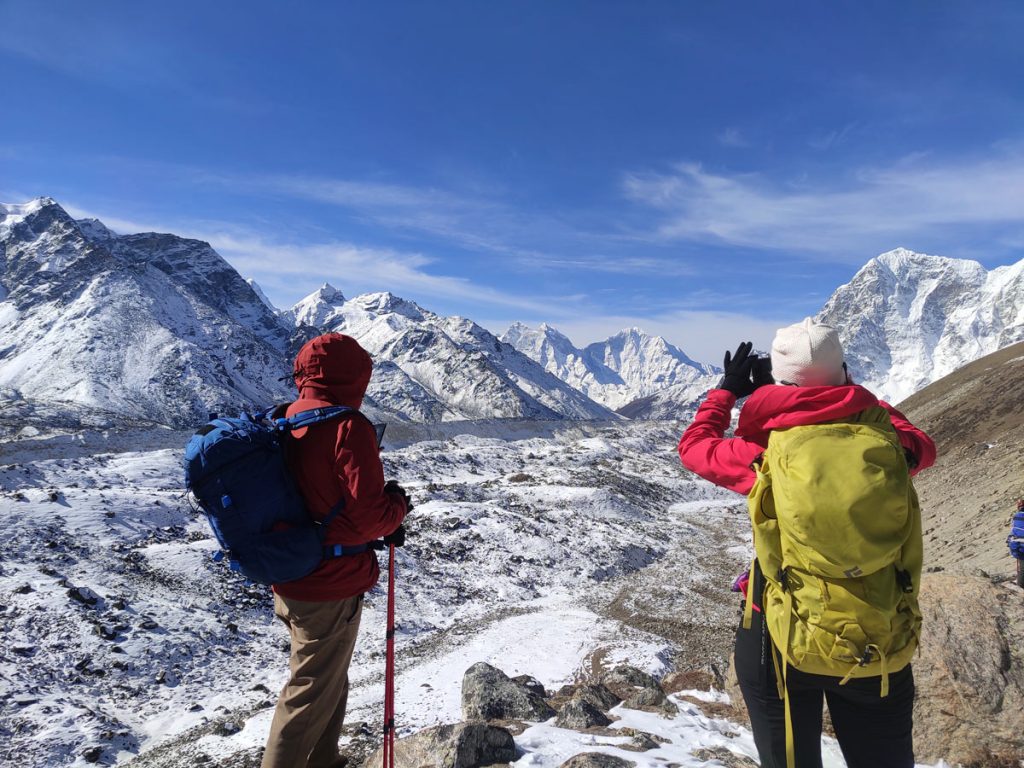
You get stunning views of Khumbu glacier, Taboche, Cholatse, Lobuche East and West, Pumori, Nuptse, Khumbutse, Lingtren, Lola, as well as Mt. Everest from the Lobuche Pass.
The closeup views of Khumbu Icefall, Lobuche East, and Ama Dablam add to the mesmerizing vista offered by the region. The experience of standing amidst these giants during your Lobuche Pass adventure is beyond thrilling.
Besides that, being at a fairly challenging altitude, it can also serve as an acclimatization stop preparing the trekkers for higher adventures along the region.
Thukla Pass (4,830 m)
Sitting at an altitude of 4,830 m (15,846 ft), the Thukla Pass is perched on the edge of Solukhumbu and is a must-visit location during your Everest adventure.
Reaching the Thukla Pass is a straightforward trek without much of a challenge and offers a unique blend of panoramas, historical significance, and a reminder of the dangers of mountains.
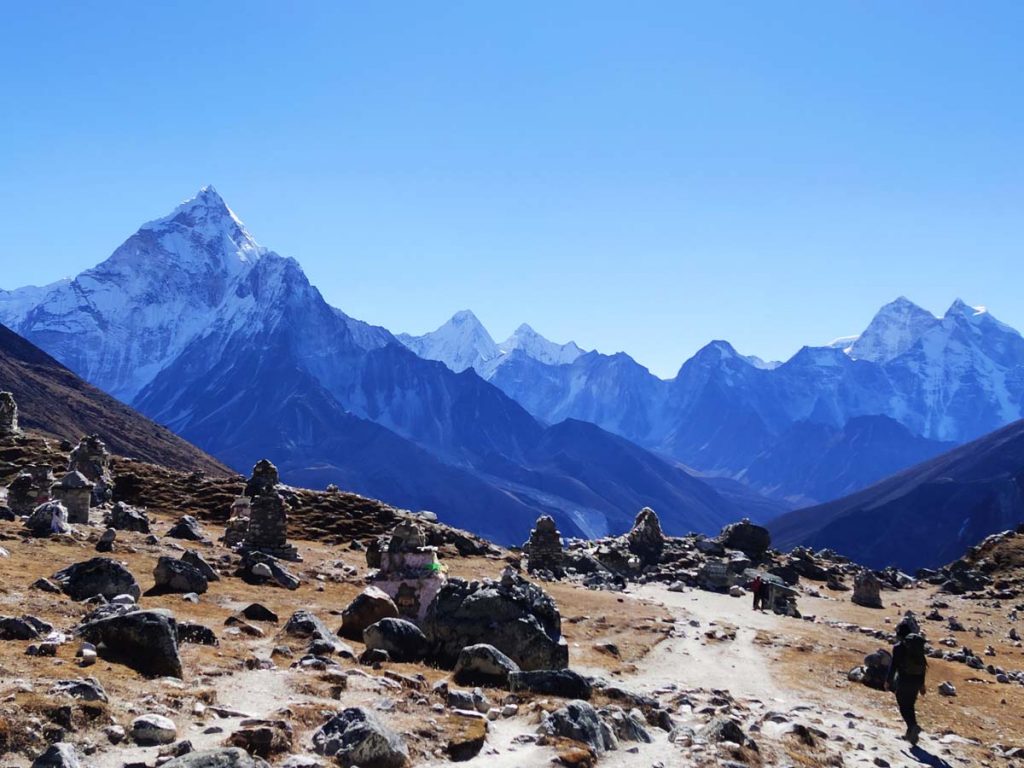
Despite being one of the most popular viewpoints of the Everest Base Camp trek, the Thukla Pass is also regarded as the saddest one as with its natural beauty comes a touch of solemnity.
The Thukla pass is also known as a memorial spot for more than a hundred brave-hearted climbers and Sherpas who lost their lives in the Everest region while also signifying the might of Mt. Everest.
The mood in the region is usually somber as visitors indulge in a moment of self-reflection accompanied by the fluttering prayer flags and winds carrying remembrance of the fallen ones and testament to the power of mother nature.
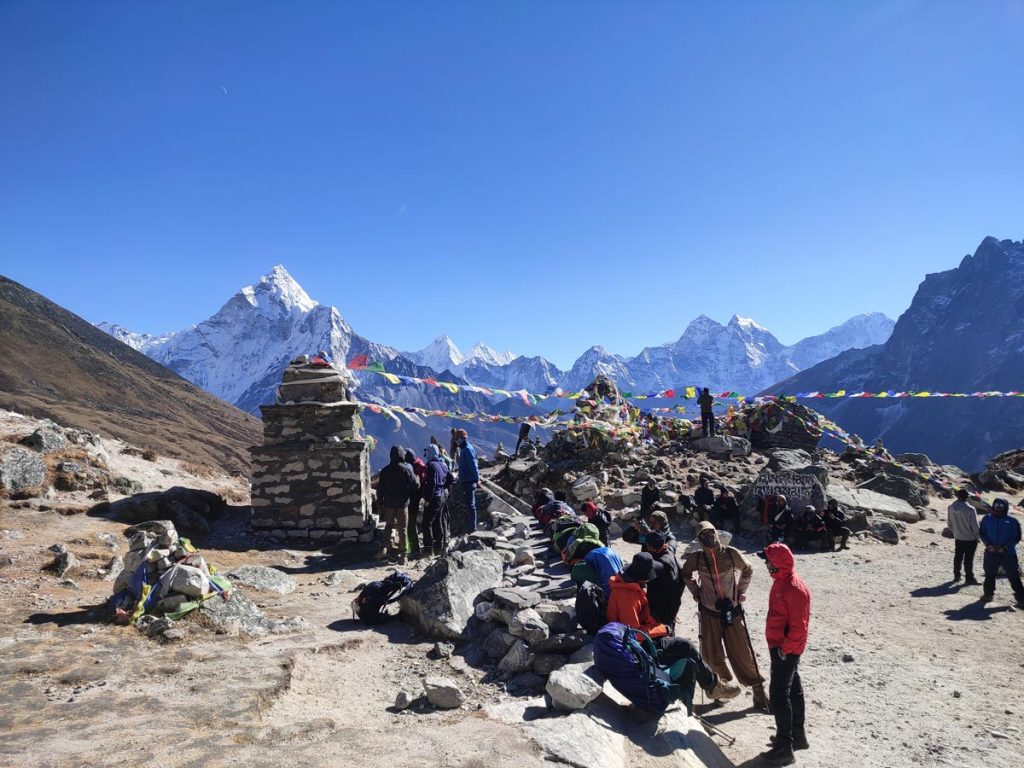
Juxtaposing the memorials is the commendable view of Himalayan giants like Cho Oyu towering over the Gyirong valley which was a historical trading route with Tibet. Below the pass lies Dughla village which also serves as a resting spot for trekkers.
Kongma La Pass (5,535 m)
Holding the reputation of the highest pass in the Everest Three Passes trek, the Kongma La Pass stands at an altitude of 5,535 m (18,159 ft) going even higher than the Everest Base Camp itself.
It is a challenging adventure as it truly tests the physical and mental resilience of the trekkers. However, it is equally rewarding as stunning views of the south face of Mt. Everest unfold amidst the trekkers in all its grandeur.
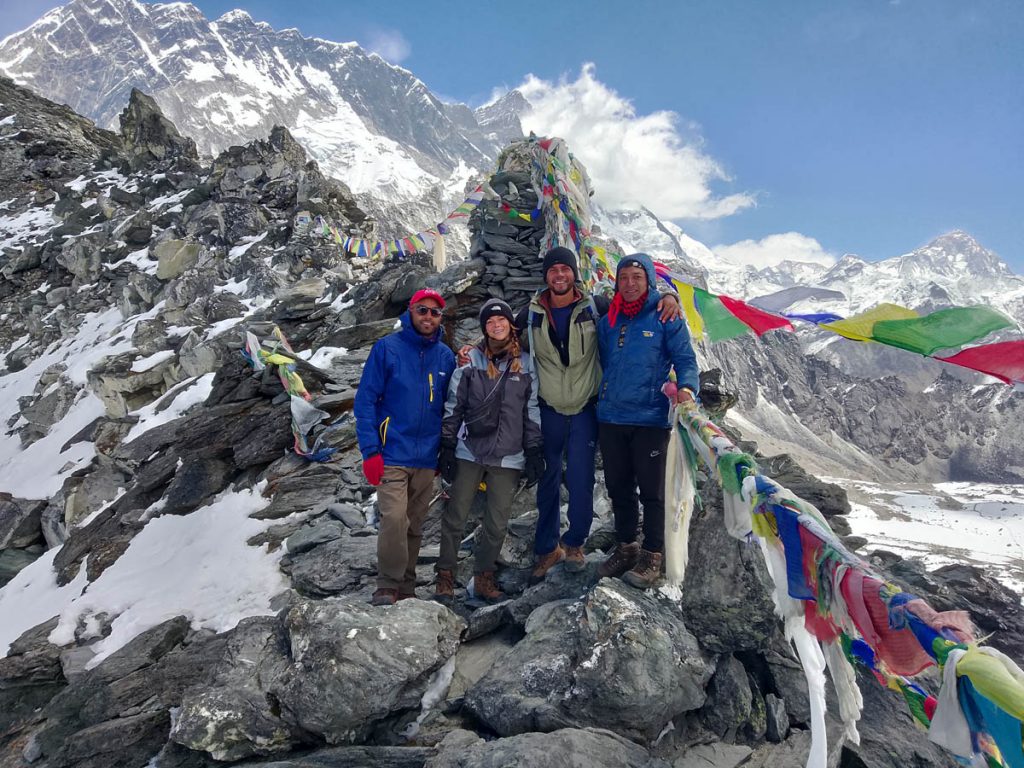
The Kongma La pass also provides breathtaking panoramas of surrounding peaks like Lhotse, Nuptse, and Ama Dablam, not to forget the feeling of being on top of the world that satiates the adrenaline rush and provides a feeling of accomplishment.
The trek to Kongma La Pass is a challenging feat including a steep and rocky ascent from Chukhung often involving switchbacks and loose scree as you gain elevation. The landscape here is dominated by a mix of glacial terrains and icy valleys.
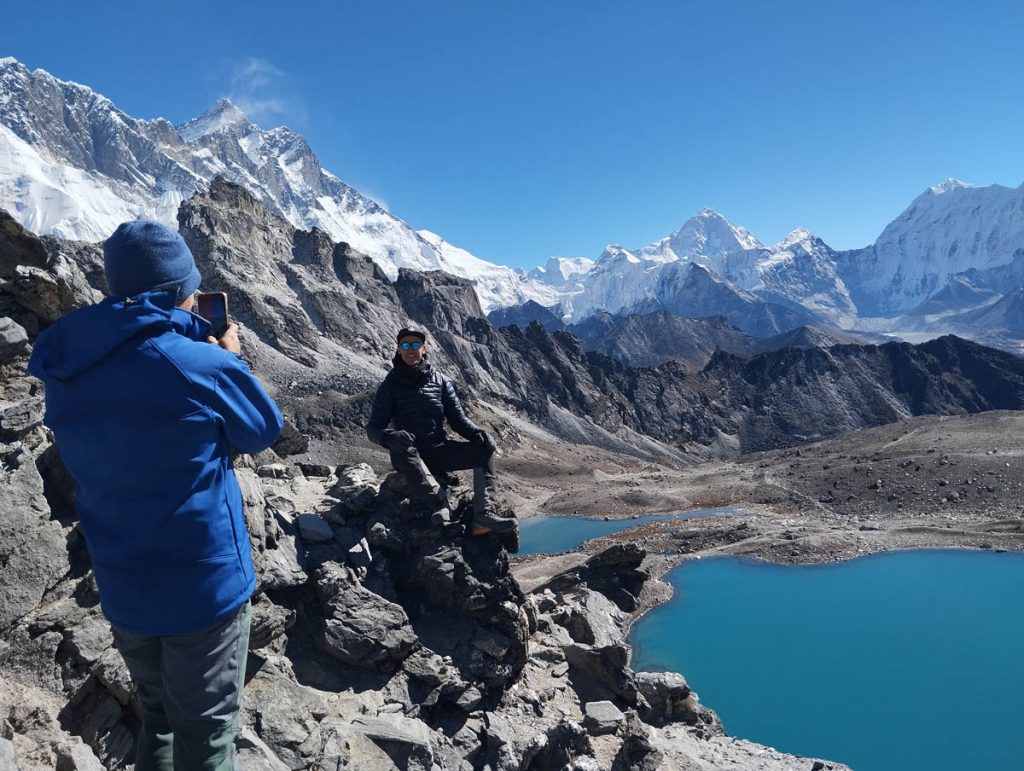
Altitude sickness is a challenge here given the high altitude, therefore acclimatization at lower stops becomes essential. Proper footing is the key to tackling the challenging terrains of the trek.
Cho La Pass (5,420 m)
Another highlight of the Everest Three Passes trek is the icy traverse that is the Cho La Pass at an altitude of 5,420 m (17,782 ft) sitting amidst the Himalayan giants of the Khumbu region.
An individual trekking route, the Cho La Pass should also be crossed when undertaking the famous Gokyo to Everest Base Camp trek adding another layer of adventure to it.
This high-altitude pass connects the Gokyo Valley with the majestic Khumbu Valley and Everest Base Camp while presenting a technical and physical challenge for the trekkers requiring surefootedness.
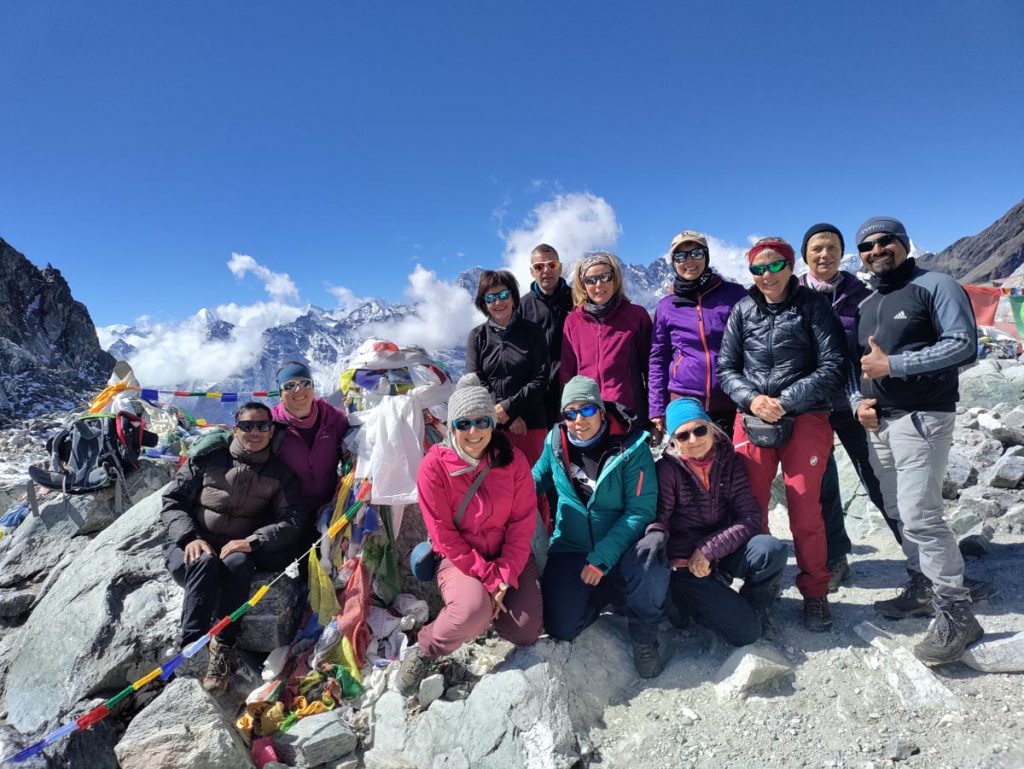
The trek to Cho La Pass can be thrilling yet challenging as you will be going through parts of the Ngozumpa Glacier and its icy crevasses while also being surrounded by the dangers of altitude sickness.
You might also encounter places requiring basic climbing skills with a few ropes and ladders here and there. The top of the pass features icy conditions further adding to the challenge.
However, it all becomes worth the view when you reach the top of the pass. Stunning 360-degree panoramas of the Khumbu valley and its Himalayan giants like Makalu, Lhotse, Cholatse, and Lobuche, as well as the south face of Mt. Everest.
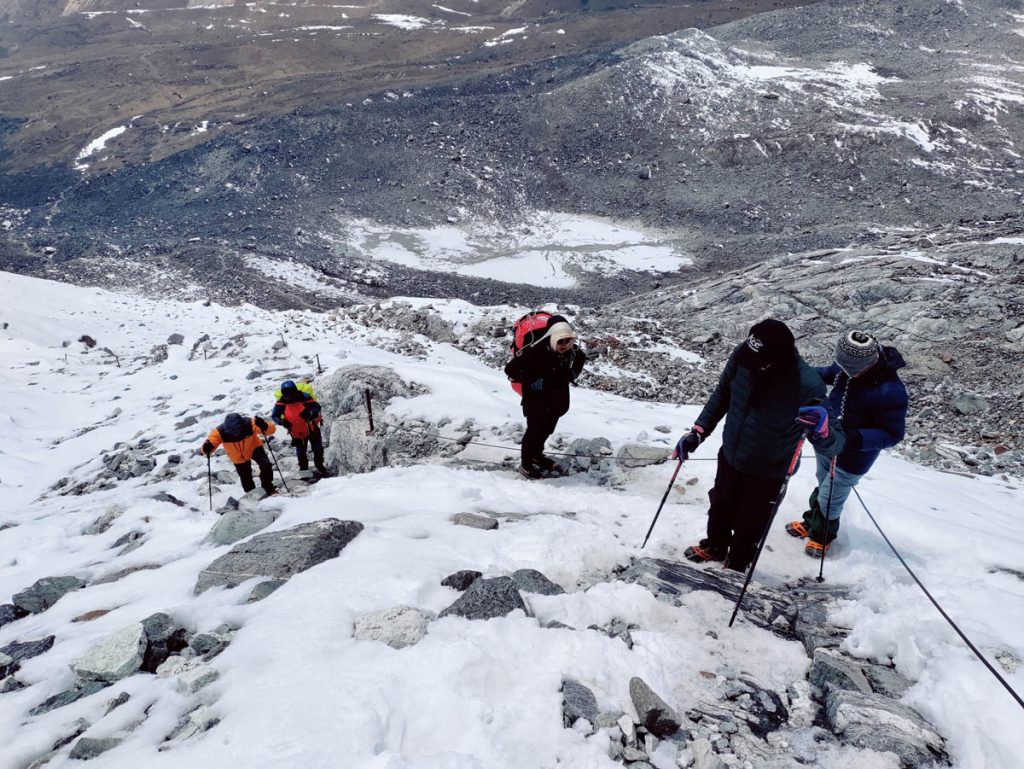
Another thing that accompanies the views is the feeling of accomplishment as you traverse a glacier and make it to the challenging altitude standing amidst the dramatic landscapes of the region.
The descent followed by the Cho La pass takes you to the Gokyo Valleys amidst the Gokyo Lakes providing you with a much-needed respite.
Renjo La Pass (5,360 m)
The final adventure in the Everest Three Passes trek is marked by the spectacular vantage point at Renjo La Pass which is located at an elevation of 5,360 m (17,585 ft) and is known for its panoramic splendors.
While the trek to Renjo La Pass can be done individually, it can also be reached as a part of the Gokyo and Renjo La Pass trek.
Unlike other popular trails and passes of the Everest region, the Renjo La pass is an off-the-beaten adventure featuring less crowd and a seclusive experience amidst the tranquility of the Himalayas.
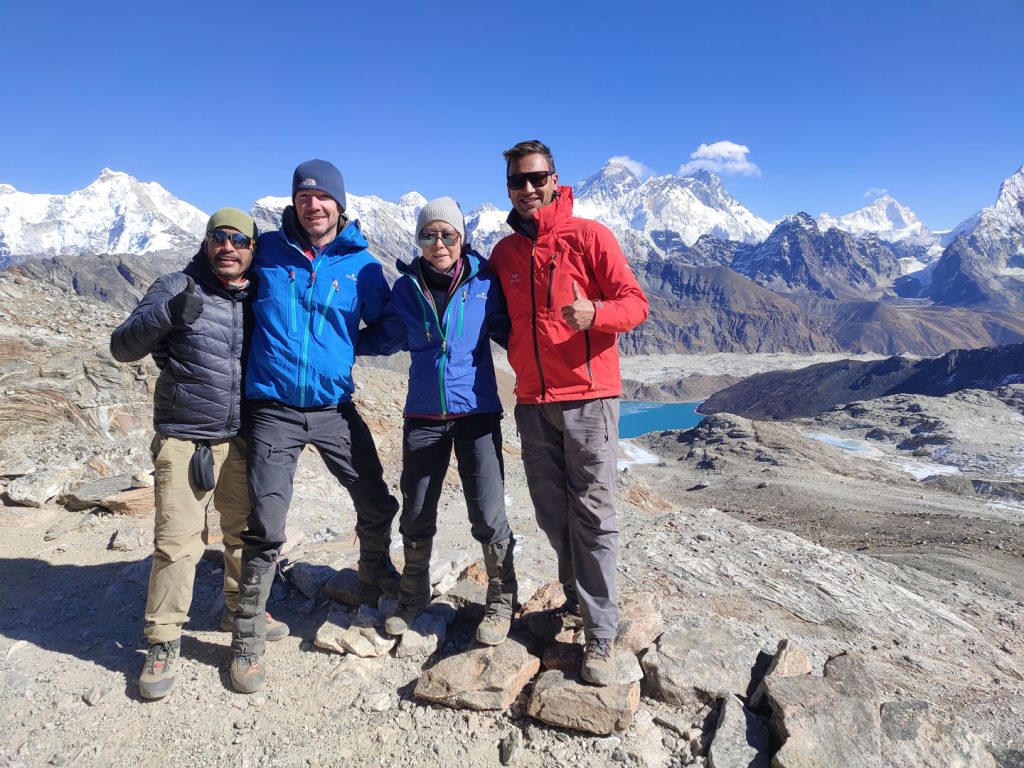
The Renjo La Pass also acts as a bridge between the popular Gokyo Valley and the lesser-known Nagphu Valley and it is a great alternative to Cho La Pass if you are planning to do it individually.
Conquering the Renjo La pass rewards the trekkers with stunning views of the majestic Gokyo Lakes against the pristine yet dramatic backdrop of Everest, Lhotse, Makalu, and Cho Oyu.
You will also get to experience a fair share of Sherpa interaction and receive their warm and welcoming hospitality while you are traversing across the trails leading to the Renjo La Pass.
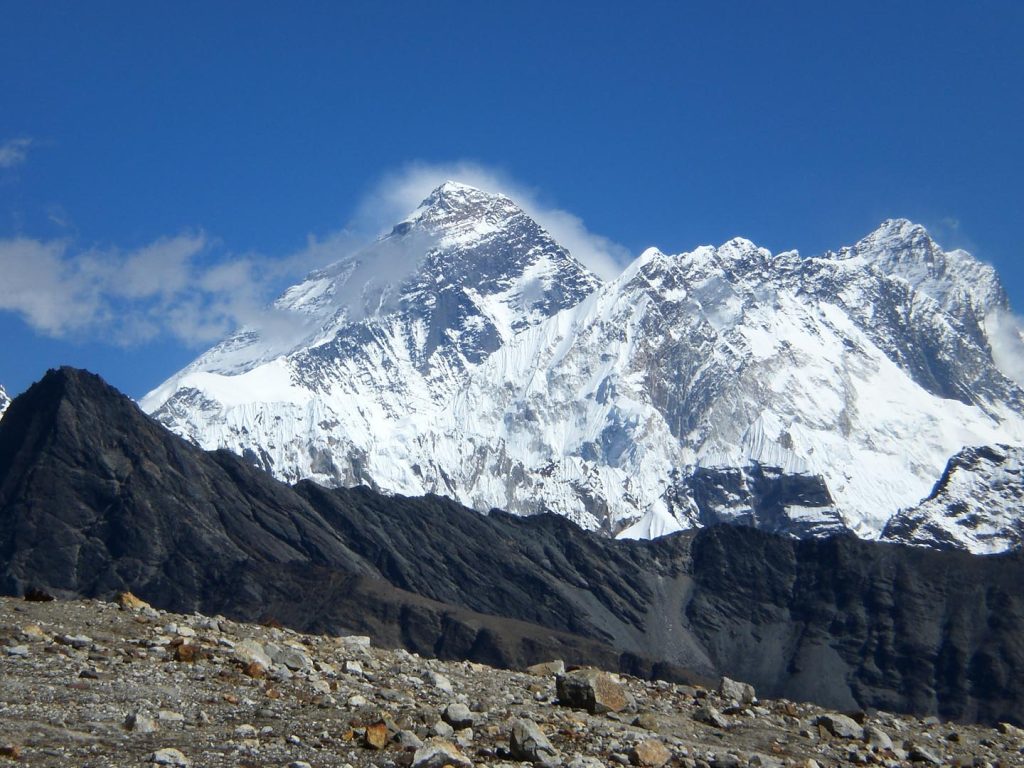
Although the Renjo La Pass doesn’t demand much technical expertise, it still is a physically demanding trek as you will be conquering an altitude beyond 5,000 m which makes you prone to altitude sickness accompanied by a rugged terrain.
Therefore, it is important that your body is well-acclimatized and you should be prepared for the limited amenities in this remote adventure.
Amphu Labtsa Pass (5,845 m)
Perched atop a massive altitude of 5,845 m (19,176 ft), the Amphu Labtsa Pass is the highest mountain pass in the Everest region as well as in Nepal. Featuring steep ascents, this pass is definitely not for the faint of hearts.
It is located between the Upper Hongu Valley and Chukkung Valley and is often regarded as the most technical and demanding pass of the region.
It is of historical significance as the pass used to be a traditional trading route for the Sherpas.
The ascent to the pass is quite a challenging feat as it features steep and rocky climbs accompanied by loose scree and boulders which transform into snow-covered and icy slopes with steep ascents at the crux as you ascend higher.
The descent is equally tricky as you will come across many ropes set up in the steepest sections requiring you to rapple down through them where a figure-8 descender might come in handy.
Therefore, proper footing and technical experience related to snow along with confident rappling skills is of paramount importance to tackle this pass covered in snow throughout the year along with proper acclimatization to prevent altitude sickness.
Mental resilience is also very important as one has to be calm and composed under pressure amidst the realm of thin air in the region.
This pass offers stunning views of Lhotse Shar, Island Peak, Kanchenjunga, Makalu, Lhotse, Everest, Cho Oyu, and the Imja Glacier while also giving access to the otherwise inaccessible Hongu Valley.
You will also experience a newfound confidence in your trekking capabilities as you peek at the panoramas standing at what feels like the top of the world.
Given its challenges, the pass doesn’t see many visitors also making it an off-the-beaten experience.
Zatrwa La Pass (4,610 m)
Zartwa La Pass is a hidden gem of the region which is a part of the secondary trekking route situated at an altitude of 4,610 m (15,124 ft) and is often a popular stop along the Mera Peak Circuit Trek.
This pass separates the Khumbu Valley from the Hinku Valley also separating the Everest Base Camp trek and Mera Peak Circuit trek in the process. It is located on a less frequented pass as compared to other passes in the region.
Despite being at a moderate altitude, the Zatrwa Pass features stunning views of mighty peaks like Numbur Himal, Kusum Kanguru, Cho Oyu, Kongde Ri, Mera Peak, as well as the Hinku Valley.
To top it off, it also offers a quieter experience full of solitude as you traverse across this less traveled pass. However, getting to the pass is quite a challenge with steep climbs and rugged terrains dotting the trail.
Mera La Pass (5,415 m)
Also known as the gateway to Mera Peak (6,171 m), the Mera La Pass is the hidden jewel of Nepal located at an altitude of 5,415 m (17,765 ft) which is the route to conquer the highest trekking peak in Nepal.
The pass lies in the Hinku Valley and borders the Sagarmatha National Park and can technically be considered an adventure beyond the shadow of Everest.
It is considered a slightly less technical pass than other passes of the Everest region.
The Mera La Pass offers stunning views of Makalu, Kanchenjunga, Mt. Everest, and other giants of the region. Besides being a standalone adventure, this pass also acts as a preparation spot and the base camp to the Mera Peak.
